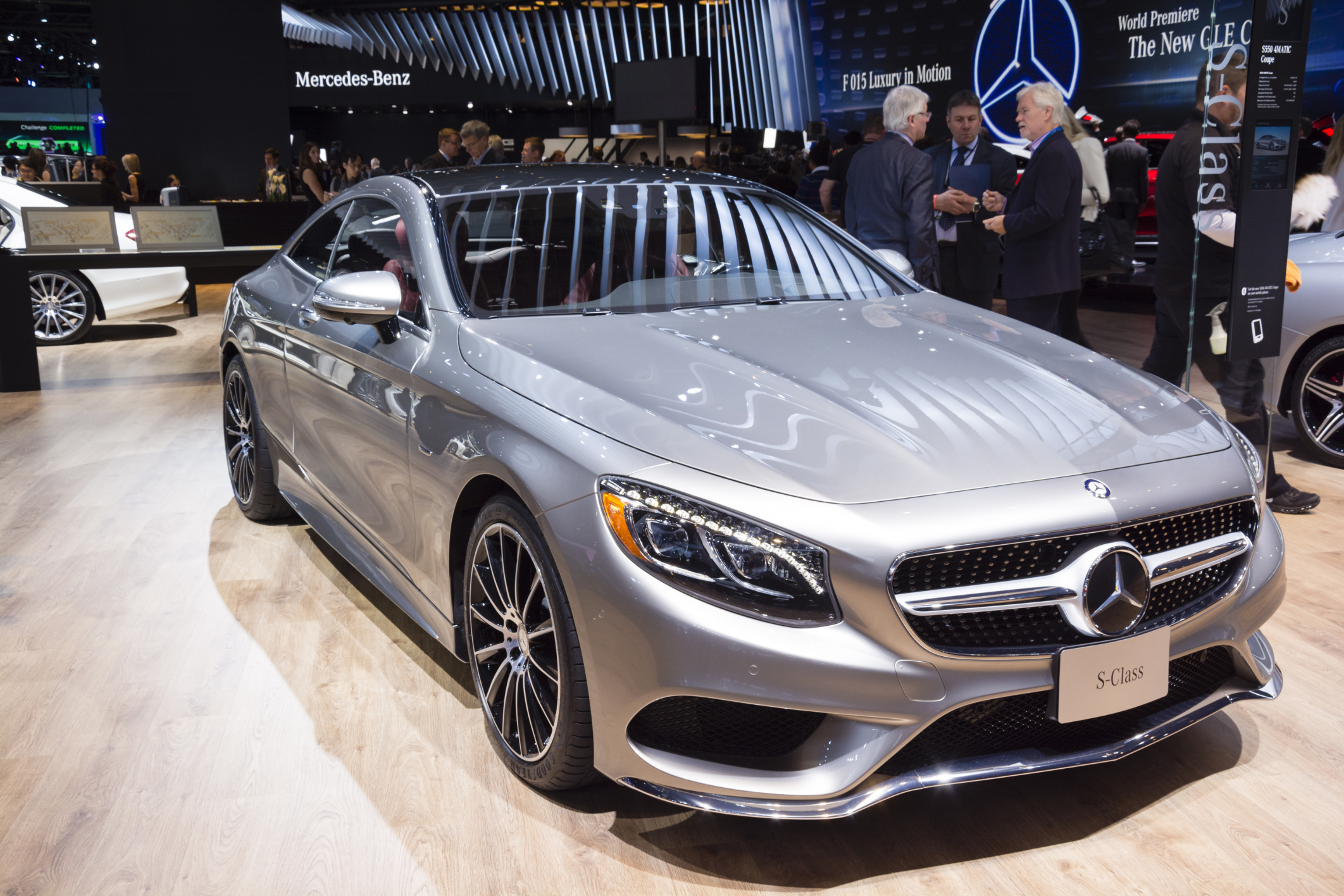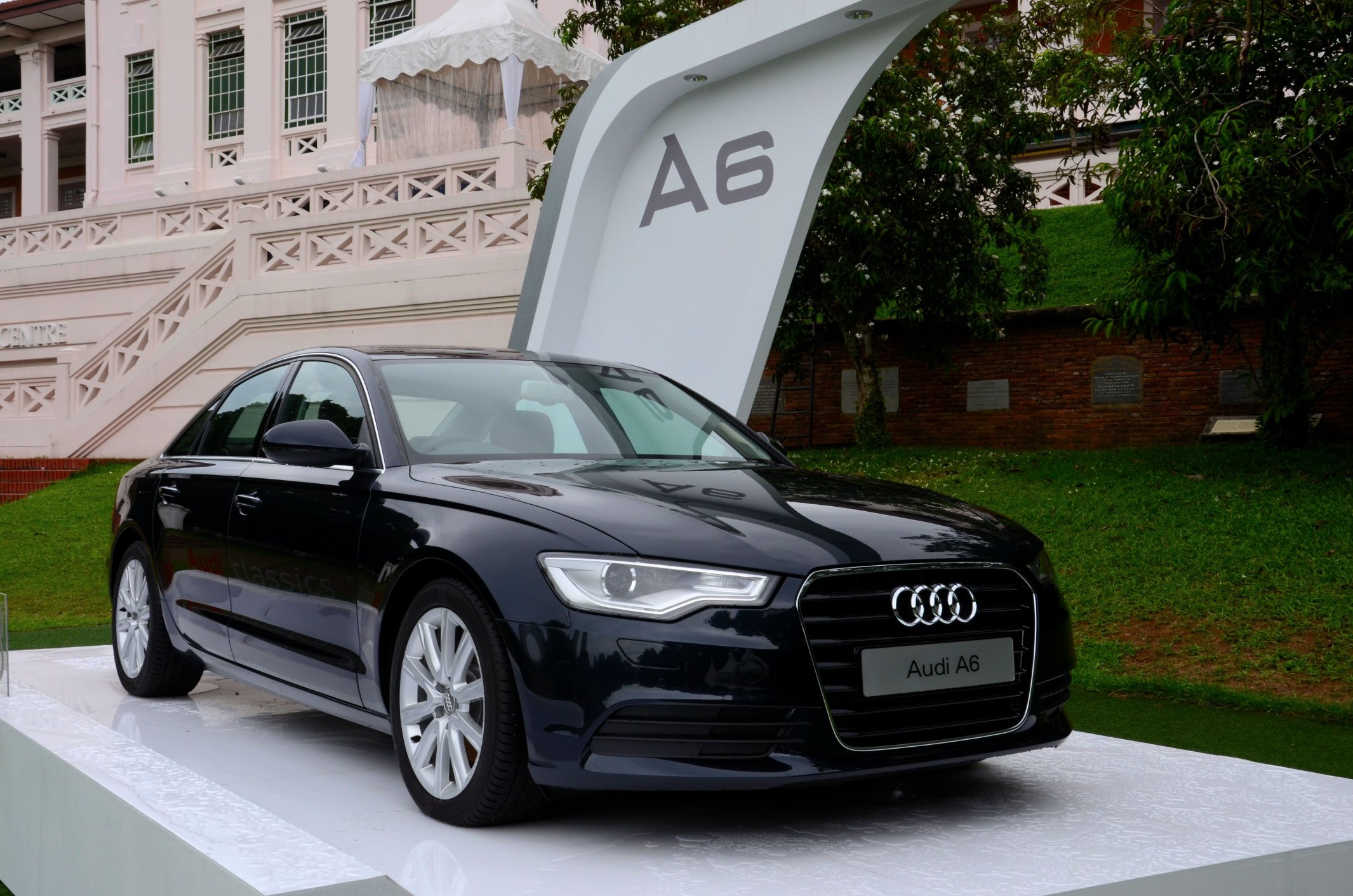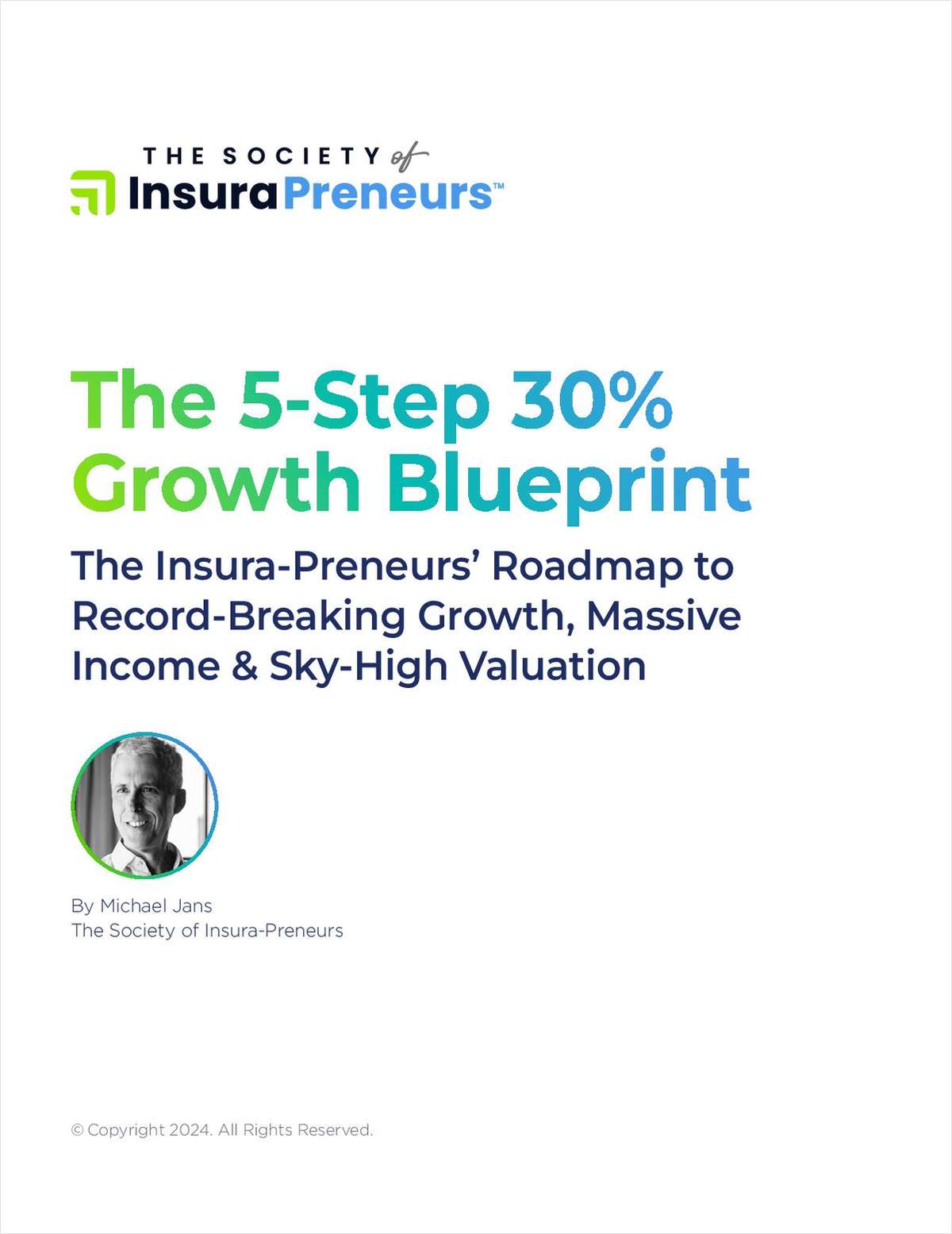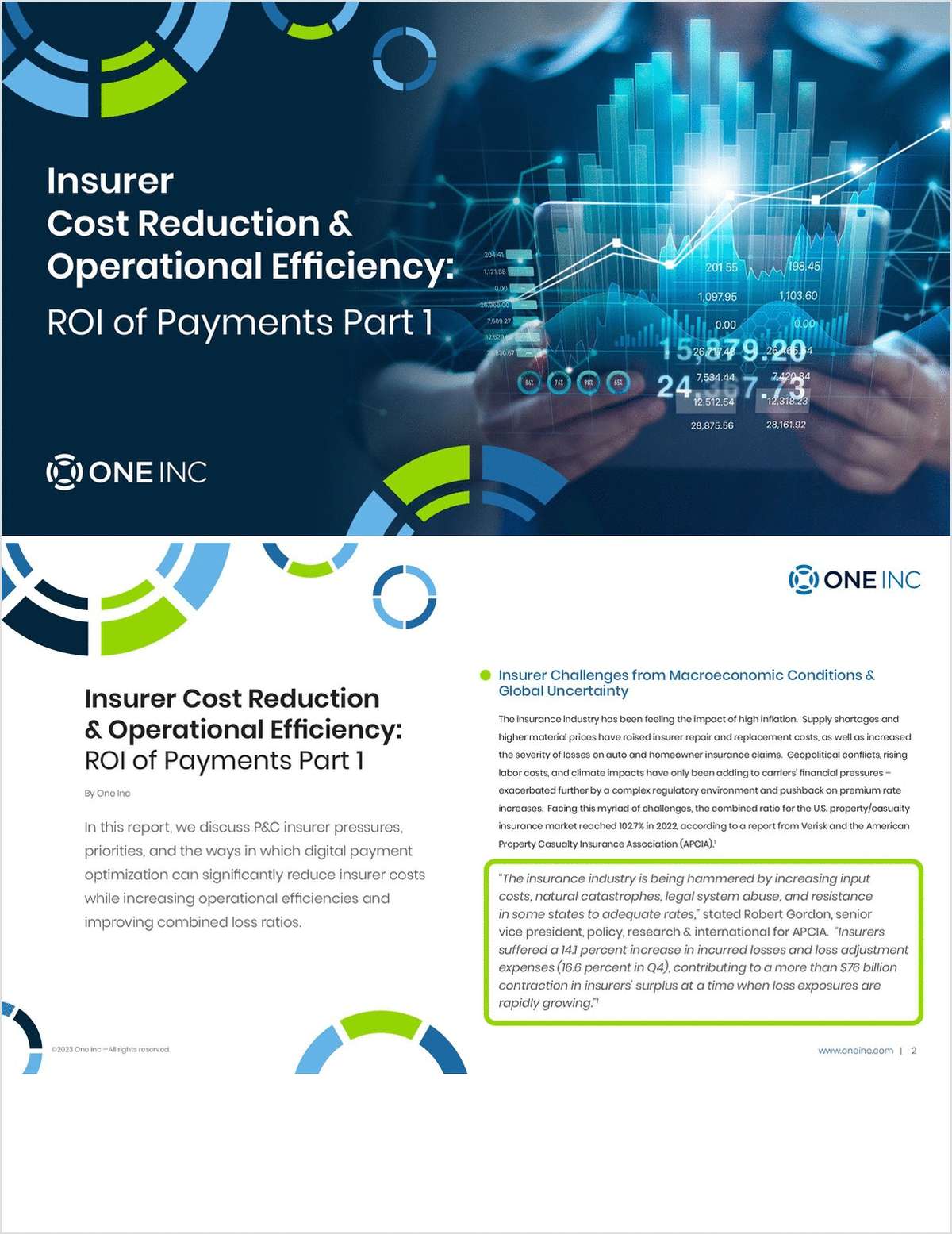To those outside of the industry, there is a perception that insurance is dull and boring, behind the times technologically — and certainly not a field anyone would consider for a career.
But they are so wrong.
Insurance is a vibrant, challenging industry where the risks and rewards constantly change and the primary focus is to make a positive impact in the lives of those who need assistance following a devastating loss. It is the only career option that offers a 98% chance of employment after college for students who choose risk management or other insurance-related majors.
At the recent J.D. Power Insurance Claims Edge conference in Chicago, 10 factors were identified as having a major impact on the auto and property and casualty segments in the next three to five years.
Here is a look at the 10 factors that will affect the business of insurance:
1. Technology
Technology is a huge driver of customer satisfaction, from how well a driver's phone syncs with an auto's systems to how easy it is for policyholders to contact an insurer online or with a mobile device to get a quote, file a claim or track it throughout the process. A J.D. Power study earlier this year found that how well drivers' technology synced their vehicles was a key determiner of whether or not they would purchase the same car the next time.
Cellphone use continues to play a major role in accidents — accounting for 26% of all motor vehicle crashes in 2014, with 5% of the crashes involving texting and 21% involving people who were talking on the phone. In the five seconds it takes a person to take his eyes off of the road while texting, a car can travel 403 feet at 55 miles per hour — longer than the length of a football field. While most people don't text at this speed, even at 20 miles an hour, a car can still travel about 100 yards.
Despite cellphone use restrictions and texting bans in almost every state, drivers continue to talk and text, and this will be an issue for insurers. Technology will remain a challenge as it continues to change and allow people to do more on mobile devices.

2015 Ford F-150 (Photo: Thinkstock)
2. Aluminum and composite cars
Fuel economy mandates are forcing manufacturers to use more aluminum in cars. By 2025, cars will go from having 343 pounds of aluminum to 550 pounds. Currently, aluminum is used primarily for wheels and engines, but that is increasing to include trunks, hoods, doors and in some cases, the entire body.
Earlier this year, Ford introduced an aluminum version of the F-150 pickup truck. Audi, BMW and Mercedes have also recently introduced aluminum vehicles. This increased use of aluminum poses some interesting issues for insurers in terms of claim severity and repair costs.
The Highway Data Loss Institute conducted three separate analyses of crash data supplied by companies to estimate the effect of aluminum on repair costs and claims. Using large luxury cars from BMW, Mercedes and Audi from 1997 to 2013, they examined the differences between aluminum cars and their steel counterparts.

Mercedes Benz S-Class (Photo: ThinkStock)
The first analysis examined the Audi A8, BMW 7 and the Mercedes Benz S-Class and was based on 67,756 collision claims. They found that overall claim severity for aluminum Audi A8 cars was 14% higher compared to their steel counterparts.
The Audi A8 repairable claims were also 13% higher than comparable vehicles. The odds of an Audi being a total loss were only 1.12 times higher than for the BMW or Mercedes. Salvage rates for all of the cars were under 10%.

(Photo: Thinkstock)
The second analysis compared the Audi A6, BMW 5 series, Mercedes Benz E class and Jaguar XJ for model years 1997-2013 and involved 281,000 collision claims. The analysis compared low component use of aluminum for items like the engine block, hood and fenders; significant usage for the roof, rails, suspension and doors; and high use in vehicles that were almost completely composed of aluminum.
Claims severity was 20% higher for high aluminum content cars compared to 9% for medium-use vehicles. Repairable claims were 19% higher for high-use vehicles versus 5% for medium-use autos. The odds of a vehicle being a total loss were 1.19 to 1.24 times higher depending on the aluminum (high vs. medium) content.
A third analysis compared the BMW 5 series (model years 2004-2010) and conducted a specific point-by-point comparison of side, front and rear impacts for aluminum cars. In front-end collisions, impacts for aluminum vehicles cost 20% more than steel vehicles. There was a 10% decrease in collision costs for rear-impact crashes, but the study organizers said this wasn't statistically significant, nor were the side-impact figures. They concluded that aluminum vehicles had higher collision claim severities than steel cars and the more aluminum used, the higher the claims.
As more body shops become equipped to repair aluminum vehicles, this could drive repair prices down. Currently, there are significant costs for training and set up since aluminum vehicles must be repaired in a facility separate from steel cars because the aluminum particles will break down steel. Aluminum repairs also require different tools and techniques, which add to the costs.

(Photo: Thinkstock)
3. Millennials
Fewer millennials are buying cars, which translates to fewer insurance policies. They have a lot of ride-sharing options or they live close enough to work to take mass transit, walk or ride their bikes. In addition, public transportation apps are changing the way people get around.
Transportation network companies such as Uber, Zipcar and Lyft are springing up in cities around the globe — creating a new transportation option, as well as coverage issues for insurers. Technology is changing the ride options for millions of consumers as smartphone users can access a number of transportation options:
- Car sharing: Consumers reserve cars for daily or hourly use. An example of this is ZipCar.
- Peer-to-peer sharing: Individuals who have cars can be paired with individuals who want to rent them. An example of this is RelayRides.
- Ride sharing: Smartphone app links drivers and riders in real time and the driver receives a small per-mile fee to help cover expenses. An example of this is Carma.
- Ride sourcing: Passengers arrange rides with their smartphones. Examples of this are Lyft and Uber.
- Taxi hailing: Passengers call and find taxis and limos with their smartphones. An example of this is Curb.
- Bike sharing: GPS and RFID are used to track bikes and there is a service charge for trips based on distance. The bikes can be used for commuting, errands and short trips. Examples of this are Citi Bike in New York City and Capital Bikeshare in Washington, D.C.
- Static data: Provides bus schedules and route maps on mobile devices.
- Real-time transit information: GPS helps riders use their smartphones to determine how long they'll have to wait until a bus or train arrives.
- Multi-modal trip planning: Apps pull together information so travelers can find the fastest, cheapest and most convenient mode of transportation. An example of this is RideScout.
- Virtual ticketing: Apps allow riders to purchase their tickets on their smartphones so they don't have to wait in lines or carry cash/
All of these options will have some sort of affect on car insurance, including who is insured, who isn't, who is liable in case of an accident and what coverage is required.
Want to continue reading?
Become a Free PropertyCasualty360 Digital Reader
Your access to unlimited PropertyCasualty360 content isn’t changing.
Once you are an ALM digital member, you’ll receive:
- Breaking insurance news and analysis, on-site and via our newsletters and custom alerts
- Weekly Insurance Speak podcast featuring exclusive interviews with industry leaders
- Educational webcasts, white papers, and ebooks from industry thought leaders
- Critical converage of the employee benefits and financial advisory markets on our other ALM sites, BenefitsPRO and ThinkAdvisor
Already have an account? Sign In Now
© 2024 ALM Global, LLC, All Rights Reserved. Request academic re-use from www.copyright.com. All other uses, submit a request to [email protected]. For more information visit Asset & Logo Licensing.








